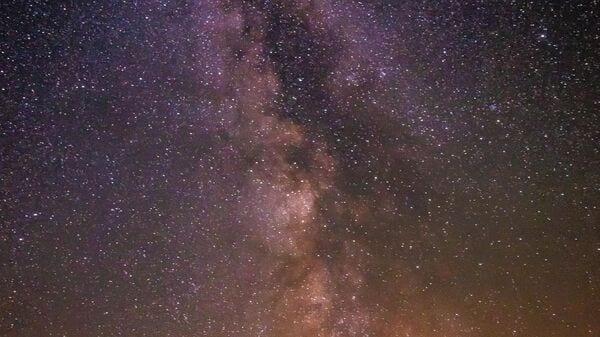
Look How They Shine For You! From Meteor Showers To Rare Planetary Views - November Celestial Events You Can't Miss
The action kicks off with Taurid meteor showers – which are known for bright fireballs that light up the sky. Then comes mid-November's Leonid meteor shower, peaking around November 17–18, promising a dazzling spray of shooting stars.
Besides glowing fireballs and meteor showers, planets too have something in store. Uranus takes center stage on November 17, at opposition - its closest and brightest point of the year - making it the perfect time to catch the distant ice giant through a telescope. Meanwhile, Jupiter and Saturn continue to shine in the evening sky, offering crystal-clear views all month long.
November 2025 celestial calendarSky-gazers, here's your cheat sheet for all the celestial events:
Meteor Showers- Southern Taurids (Nov 4–5): Peaking on November 4-5, this shower produces slow-moving, bright meteors, with up to 7 meteors per hour. It's a good time to spot fireballs. Northern Taurids (Nov 11–12): Fewer meteors, but expect brilliant fireballs. Leonids (Nov 17–18): Fast, bright streaks - up to 15 meteors per hour. Alpha Monocerotids (Nov 21): Rare but spectacular outbursts - sometimes over 1,000 per hour November Orionids (Nov 28): Peaking on November 28, the orinoids produce faint meteors, with a frequency of around 3 meteors per hour.
The largest and brightest full moon of the year, the 'Beaver Moon' will light up the night sk on Wednesday, 5 November. It will reach its peak brightness at 8:19 AM EST, appearing about 8% larger and 16% brighter than average.
In parts such as New York City, the Beaver moon was already spotted glowing behind the Empire State and Chrysler Buildings.
The“Beaver Moon” is a very old name and has its own history. Many people believe that the term came from Native American traditions, when beaver traps were set before rivers froze in winter. Others say it reflects the period when beavers build their dams and prepare for the cold months ahead.
Planetary AlignmentsMercury's highest point - Mercury is set to reach its highest point in the night sky, making the planet visible after sunset.
Venus & Mercury pairing - You can catch the two planets glowing close together on 25 November
Uranus at opposition - On November 21, Uranus will be at its closest point to Earth, visible all night and shining faintly near the Pleiades in Taurus.
Saturn's ring plane crossing- On November 23 - the planet's iconic rings will reportedly almost vanish as Earth aligns with them.
Legal Disclaimer:
MENAFN provides the
information “as is” without warranty of any kind. We do not accept
any responsibility or liability for the accuracy, content, images,
videos, licenses, completeness, legality, or reliability of the information
contained in this article. If you have any complaints or copyright
issues related to this article, kindly contact the provider above.


















Comments
No comment